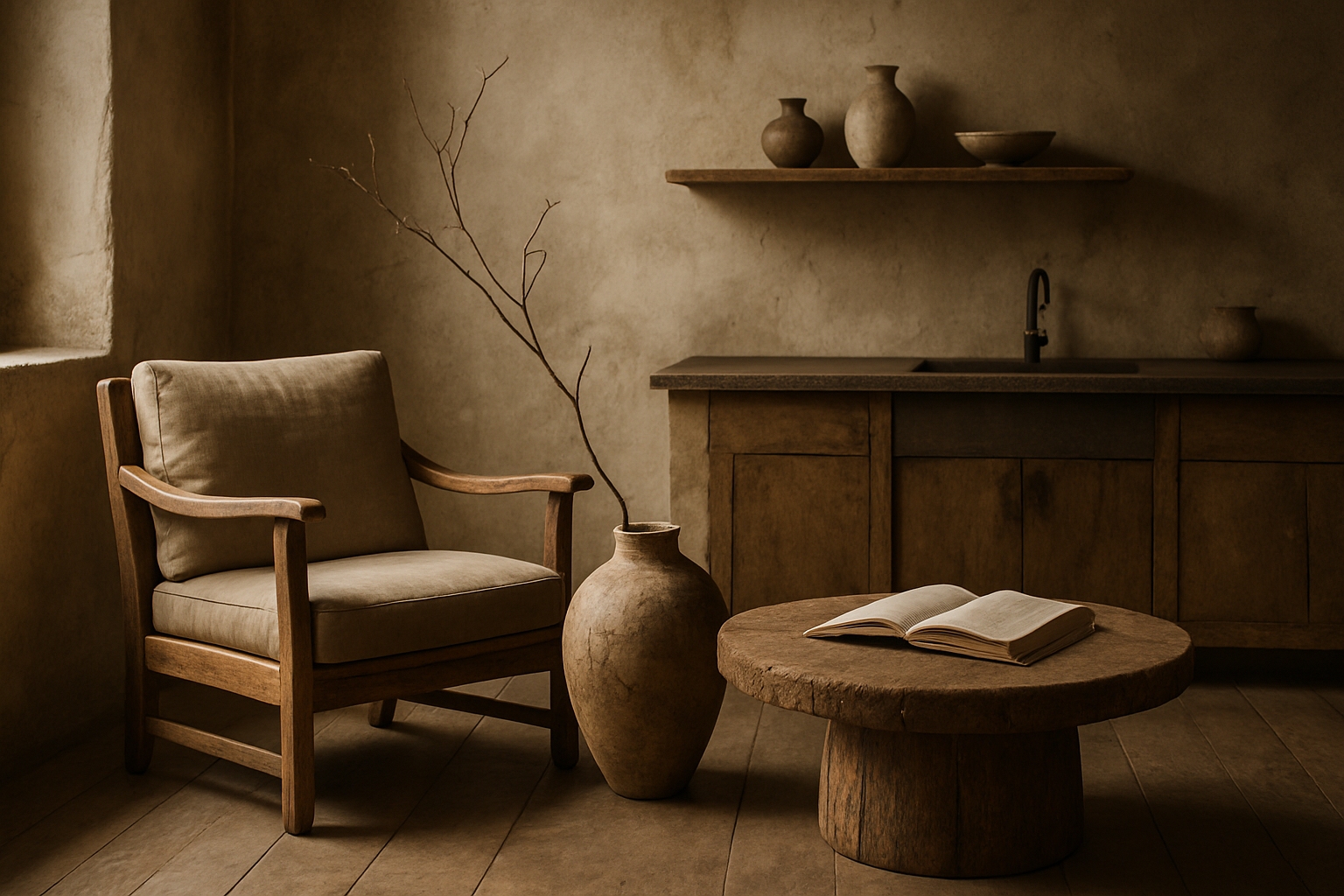Embracing Wabi-Sabi: The Art of Imperfect Beauty in Home Design
In a world obsessed with perfection, a quiet revolution is taking place in home design. Wabi-sabi, an ancient Japanese philosophy celebrating the beauty of imperfection, is making waves in Western interiors. This aesthetic approach, rooted in Zen Buddhism, encourages us to find beauty in the flawed, the aged, and the natural. As homeowners increasingly seek authenticity and mindfulness in their living spaces, wabi-sabi offers a refreshing alternative to the polished perfection often portrayed in design magazines.

The Origins and Philosophy of Wabi-Sabi
Wabi-sabi finds its roots in 15th century Japan, evolving from the Buddhist tea ceremony. The term wabi originally referred to the loneliness of living in nature, away from society, while sabi meant withered or lean. Over time, these concepts merged to embody a worldview that finds beauty in simplicity, impermanence, and imperfection.
In the context of home design, wabi-sabi translates to an appreciation of natural materials, modest forms, and the marks left by time and use. It’s about creating spaces that feel lived-in and loved, rather than showrooms of pristine perfection. This philosophy challenges our modern obsession with newness and flawlessness, encouraging us to find contentment in the present and beauty in the aging process.
Key Elements of Wabi-Sabi Design
To incorporate wabi-sabi into your home, focus on organic materials, muted colors, and handcrafted items. Natural wood with visible grain, stone with rough textures, and fabrics like linen or raw silk embody the wabi-sabi spirit. Embrace asymmetry and irregularity in shapes and patterns. A hand-thrown ceramic vase with subtle imperfections or a naturally weathered wooden table can become focal points that tell a story.
Color palettes in wabi-sabi interiors tend to be subdued, mirroring the hues found in nature. Think earthy tones like moss green, stone gray, and sandy beige. These colors create a calming atmosphere and allow the textures and imperfections of materials to take center stage. Avoid stark whites or bold, artificial colors that can disrupt the natural harmony.
The Art of Curating Imperfection
One of the most challenging aspects of wabi-sabi design is learning to curate imperfection thoughtfully. It’s not about creating chaos or neglecting your space, but rather about selecting items with character and allowing them to age gracefully. This might mean choosing a leather armchair that will develop a beautiful patina over time, or displaying a collection of mismatched vintage ceramics.
Consider the concept of kintsugi, the Japanese art of repairing broken pottery with gold. This practice, closely related to wabi-sabi, celebrates the history of an object by highlighting its repairs rather than hiding them. In your home, this could translate to proudly displaying a beloved piece of furniture that’s been carefully mended, or incorporating reclaimed materials with visible signs of their previous life.
Wabi-Sabi in the Digital Age
In our increasingly digital world, the tactile and imperfect nature of wabi-sabi offers a much-needed counterbalance. As we spend more time in virtual spaces, our homes can become sanctuaries of authenticity and sensory experience. Rough textures, organic shapes, and materials that change over time provide a grounding presence that screens cannot replicate.
Interestingly, the principles of wabi-sabi can extend beyond physical objects to how we use technology in our homes. Consider opting for simple, intuitive devices that blend seamlessly into your environment rather than dominating it. A minimalist smart speaker crafted from natural materials, for instance, can provide functionality without disrupting the calm aesthetic of a wabi-sabi inspired space.
Cultivating Mindfulness Through Design
Perhaps the most profound aspect of wabi-sabi design is its ability to foster mindfulness and presence. In a wabi-sabi home, each object has a purpose and a story. This thoughtful curation encourages us to be more aware of our surroundings and to find joy in small, everyday moments.
Create spaces that invite contemplation and slow living. A reading nook with a worn leather chair and a handwoven blanket becomes a retreat for quiet reflection. A kitchen with open shelving displaying well-used utensils and hand-thrown dishes encourages mindful cooking and dining experiences. By surrounding ourselves with objects that have depth and character, we’re reminded to live more fully in the present moment.
Balancing Wabi-Sabi with Modern Life
While the philosophy of wabi-sabi encourages embracing imperfection, it’s important to strike a balance with practicality and personal comfort. Not every element in your home needs to be weathered or handmade. The key is to create a harmonious blend of old and new, perfect and imperfect.
Modern conveniences can coexist with wabi-sabi principles. A sleek, energy-efficient appliance can be balanced by surrounding it with natural materials and handcrafted items. The goal is to create a space that feels both grounding and functional, where the imperfect beauty of wabi-sabi enhances rather than hinders your daily life.
The Future of Wabi-Sabi in Home Design
As we move towards more sustainable and mindful ways of living, the principles of wabi-sabi are likely to gain even more relevance. This philosophy aligns perfectly with the growing interest in eco-friendly design, minimalism, and the slow living movement. By valuing what we have and finding beauty in imperfection, we naturally reduce consumption and waste.
Looking ahead, we may see wabi-sabi influencing not just interior design, but architecture and urban planning as well. Imagine buildings designed to age beautifully, celebrating the patina that comes with time and use. Or public spaces that incorporate natural, imperfect elements to create more human-centric environments.
Embracing wabi-sabi in our homes is more than just a design choice – it’s a way of relating to our environment and ourselves. It teaches us to find beauty in the fleeting, the imperfect, and the authentic. As we navigate an increasingly complex world, the simplicity and mindfulness of wabi-sabi offer a path to creating homes that are not just visually appealing, but deeply nourishing to the soul.





